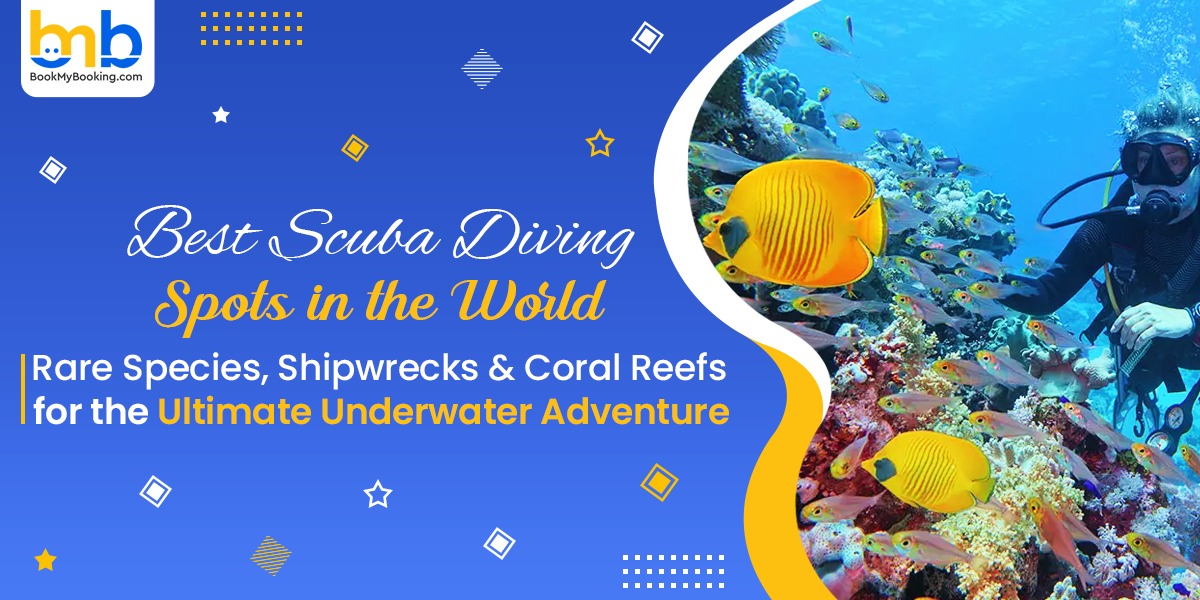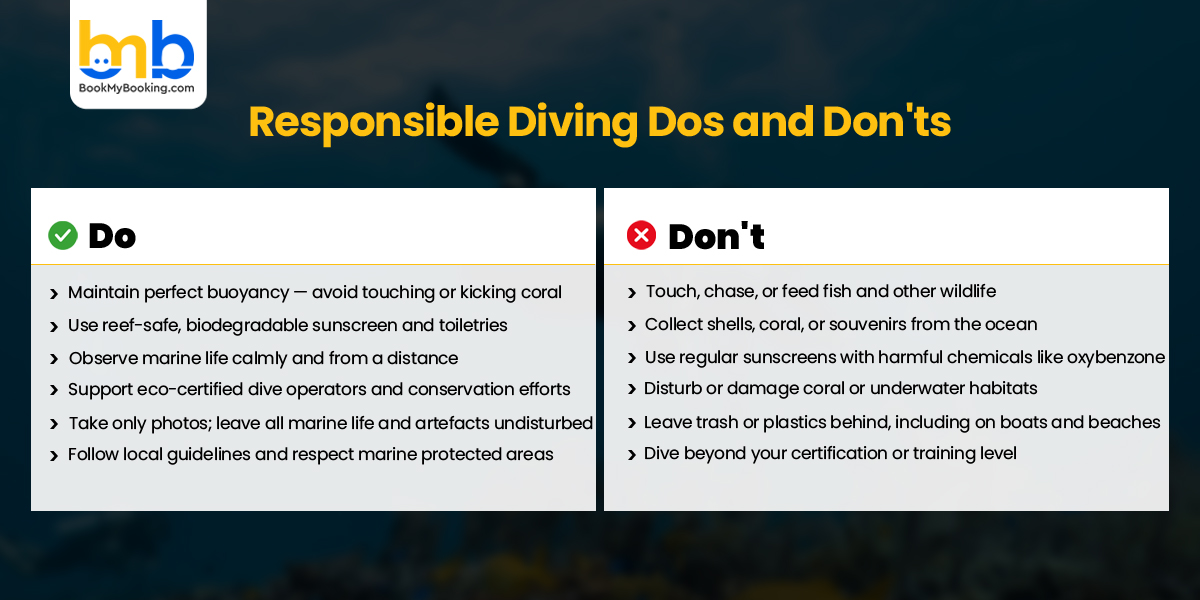There's something magical about slipping beneath the surface of the sea. The noise fades and the light changes. And suddenly, you're in another world, one teeming with colours, creatures, and stories from thousands of years ago. Scuba diving opens the door to underwater realms that few people experience firsthand.
But not all dive sites are created equal. Some spots offer encounters with creatures found nowhere else. Others are home to haunting shipwrecks frozen in time. And then there are those vibrant coral gardens so rich in life that they feel more like living cities. This blog explores the best scuba diving spots in the world for three epic experiences: rare, historic shipwrecks and pristine coral reefs.
The guide will bring together the top scuba diving destinations that belong on every underwater explorer's dream list.
Checklist: What to Pack for Your Dive Trip
Packing smart can elevate your dive experience. Packing right means diving right. A well-prepared diver is safer and has more time to enjoy the underwater magic.
Dive Essentials:
- Dive certification card(s) & logbook
- Personal dive mask (fitted)
- Wetsuit (appropriate thickness for the location)
- Fins, snorkel, and dive boots
- Regulator & dive computer
- Surface Marker Buoy (SMB)
- Underwater torch (especially for wreck or night dives)
Travel Essentials:
- Waterproof bags or dry sacks
- Travel insurance with diving coverage
- Reef-safe sunscreen & eco-friendly toiletries
- First aid kit & motion sickness tablets
- Lightweight towel and microfiber cloth
- Adapter plug and charger (for cameras/dive computers)
Optional (but helpful):
- Underwater camera (for those top underwater photography dive sites)
- Logbook stickers, pencils, or stamps
- Portable wetsuit hanger or drying strap
- Dive gear labels (to avoid mix-ups on liveaboards)
Responsible Diver Tips
Diving responsibly requires sacrifice, mindfulness, and care. The reward is diving in places that remain beautiful for years to come. To truly enjoy your scuba diving adventures worldwide while safeguarding marine environments, follow these responsible diver guidelines:
- Buoyancy is everything: Avoid touching or kicking coral. Master your buoyancy to protect delicate reef life.
- Take only photos: Don't collect shells, coral, or marine life. Leave the ocean exactly as you found it.
- Respect wildlife space: Observe from a distance. Don't chase, feed, or harass marine animals.
- Dive with eco-certified operators: Choose dive centres involved in reef monitoring, cleanup, or marine protection programs.
- Avoid reef-damaging products: Use reef-safe sunscreen and biodegradable toiletries when diving in sensitive waters.
- Support conservation fees: Many protected areas rely on tourism fees for upkeep; these help keep marine conservation diving locations
Scuba Diving for Rare Marine Species
One of the most unforgettable things you can do as a diver is lock eyes with a creature that few on Earth have ever seen in person. In these moments—hovering beside a 20-foot manta ray, tracking the hypnotic pulse of a mimic octopus, or drifting through a school of hammerheads—you truly understand how vast and mysterious our oceans are.
These dive spots aren't just beautiful, they're alive with rare and endangered species, often found nowhere else on Earth.
Read More - Scuba diving dubai ticket price
Galápagos Islands, Ecuador
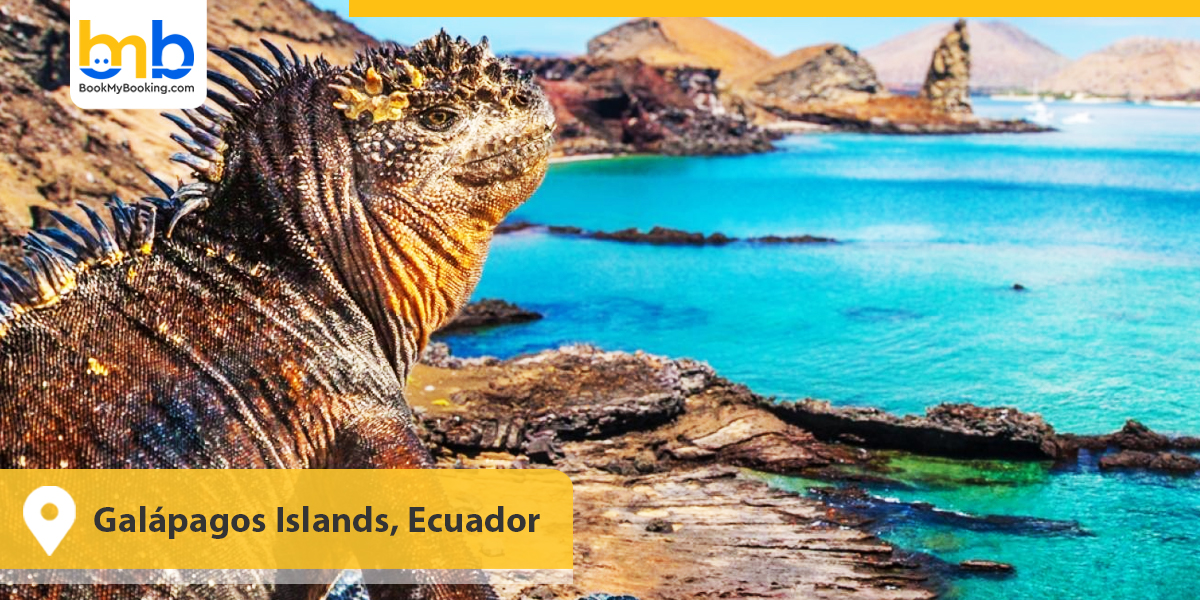
- Best time to dive: June to December
- Dive level: Intermediate to advanced
- Notable site: Darwin & Wolf Islands
The Galápagos are legendary and for good reason. As one of the top scuba diving destinations, this remote archipelago offers sightings of hammerhead sharks, sea lions, eagle rays, and even marine iguanas. Powerful currents bring rich nutrients, making these waters ideal for large pelagics and scuba diving, where rare sea creatures can be observed. You'll often find yourself drifting through entire schools of sharks or playing underwater tag with curious sea lions. It's wild, raw, and unpredictable—in the best way possible. Though not beginner-friendly, for those who can handle the surge and the chill, the Galápagos is the dive that stays with you for life.
Raja Ampat, Indonesia
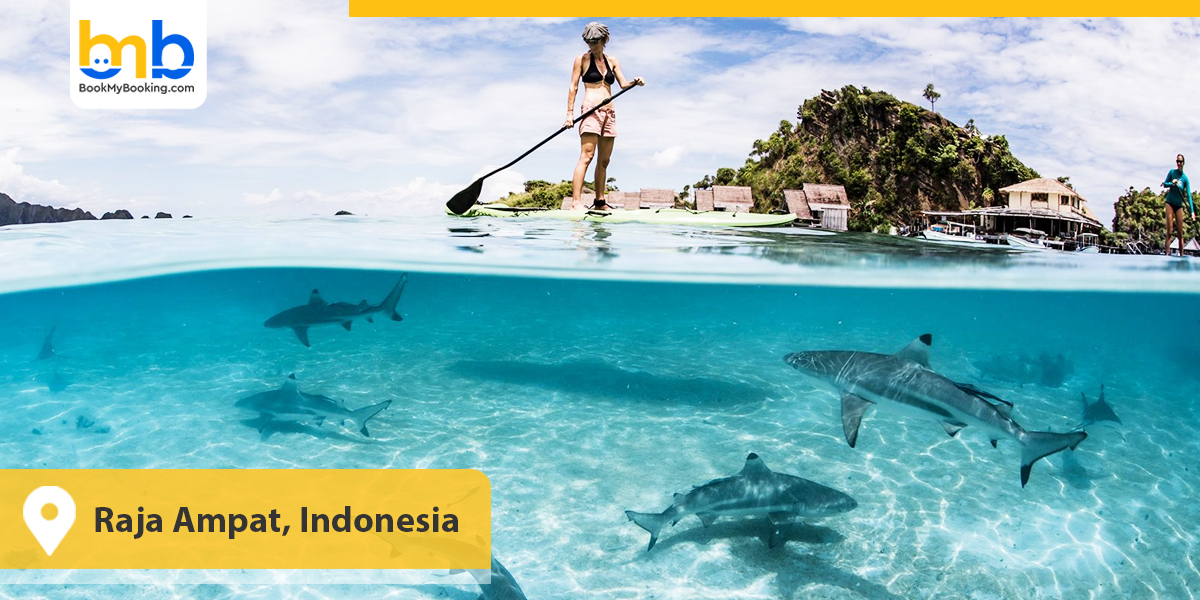
- Best time to dive: October to April
- Dive level: All levels
- Notable site: Misool Marine Reserve
Located in the heart of the Coral Triangle, Raja Ampat is a diver's dream. With over 1,400 reef fish species and vibrant coral gardens, it's a certified biodiversity hotspot for divers. From pygmy seahorses to walking sharks, every dive here feels like flipping through a tropical biology textbook. The region is also a model for marine conservation diving locations, with local communities actively working to protect the health of the reefs. Calm waters and mind-blowing visibility make it ideal for underwater photography or simply soaking in nature's most colourful show. This is it if you're looking for rich marine life, pristine reefs, and rare species in one place.
Read More - Best Time To Visit Indonesia For Every Traveler
Socorro Islands, Mexico
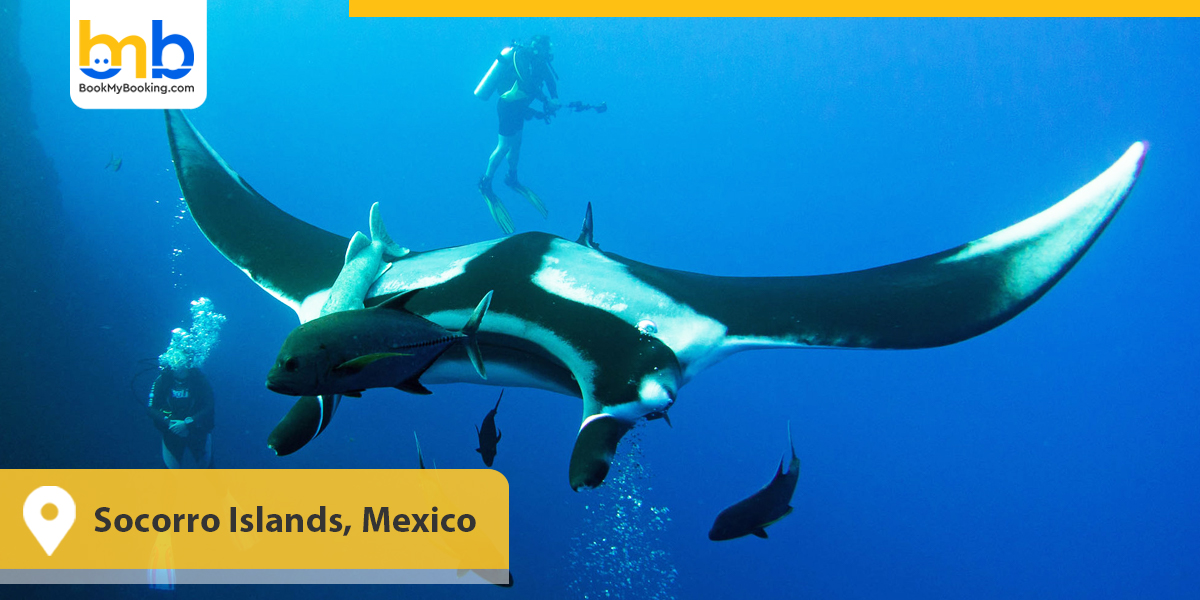
- Best time to dive: November to May
- Dive level: Advanced
- Notable site: Roca Partida
Often referred to as the "Galápagos of Mexico," the Socorro Islands offer world-class diving, featuring giant oceanic manta rays, dolphins, and whale sharks. What makes Socorro stand out isn't just the species; it's the experience. Mantas often approach divers, swimming in wide, elegant circles. Whale sharks glide by, massive yet peaceful. It's a must for diving with manta rays and whale sharks, especially for those craving big animal encounters in the blue. Accessible only by liveaboard, Socorro also features schools of hammerheads and occasional sightings of humpback whales. This Pacific outpost checks every box if you're after high-adrenaline scuba diving adventures worldwide.
Lembeh Strait, Indonesia
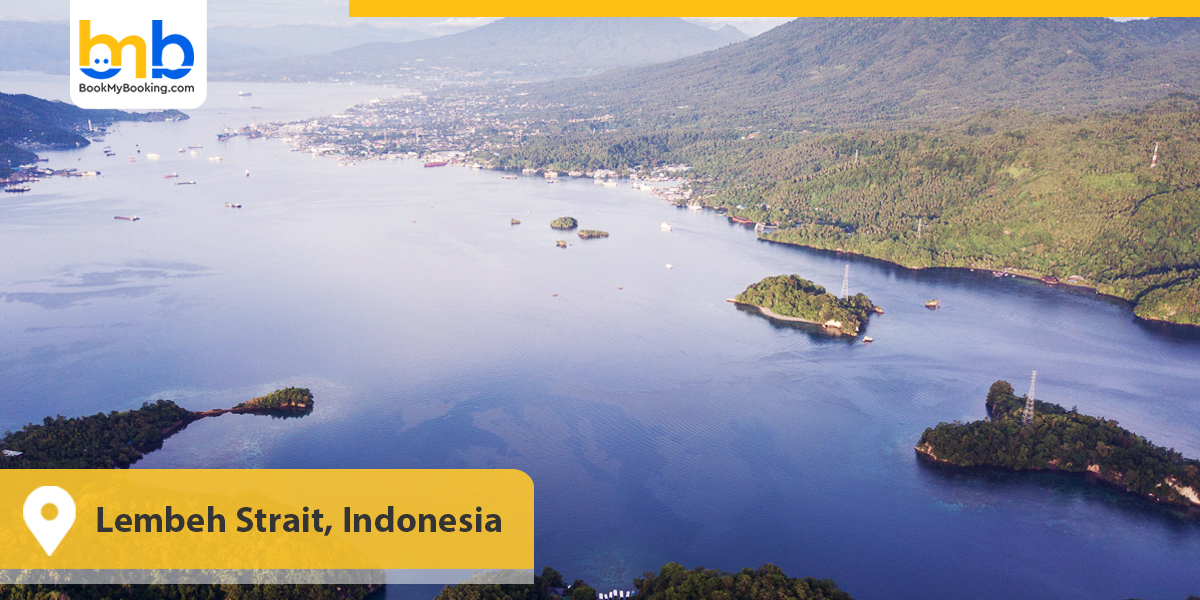
- Best time to dive: Year-round
- Dive level: All levels
- Notable site: Nudi Falls
Lembeh Strait is the capital of macro diving for rare critters. Lembeh's magic lies in its black sand and what hides within it, unlike most coral-rich destinations. From mimic octopuses to flamboyant cuttlefish, the biodiversity here is downright bizarre and beloved by photographers. You're not just looking at fish; you're discovering alien-like species few have ever seen. Calm conditions and shallow depths make it a great spot to hone camera skills, earning it a place among the top underwater photography dive sites. For those who love the thrill of spotting the unusual, Lembeh is a quirky, critter-packed paradise.
Top Shipwreck Diving Hotspots
Some dive sites offer natural beauty. Others offer history frozen in time. Shipwrecks do both. Diving among sunken ships isn't just about rust and rivets—it's about discovering underwater museums teeming with marine life. These shipwrecks are a diver's dream, from coral-draped WWII vessels to ghostly freighters lost to storms.
SS Thistlegorm – Red Sea, Egypt
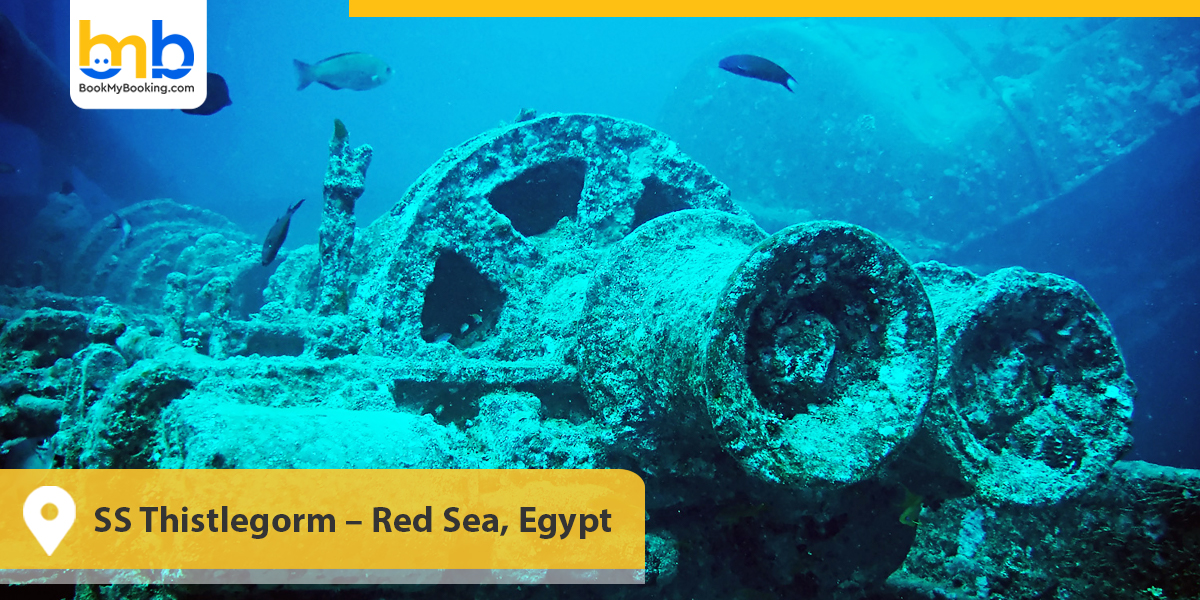
- Best time to dive: March to May, September to November
- Dive level: Intermediate to advanced
- Notable site: Ras Muhammad National Park
One of the most famous shipwreck dive sites worldwide, the SS Thistlegorm was a British cargo ship sunk by German bombers in 1941. Today, it lies upright at the bottom of the Red Sea, its cargo—motorcycles, trucks, rifles—still remarkably intact. The eerie atmosphere, thriving coral growth, and curious fish make this more than just a wreck—it's a living history lesson. Penetration dives reveal passageways filled with wartime relics, while the outer hull teems with glassfish and lionfish. Few shipwreck scuba diving locations blend story and scenery so seamlessly.
Chuuk Lagoon – Micronesia
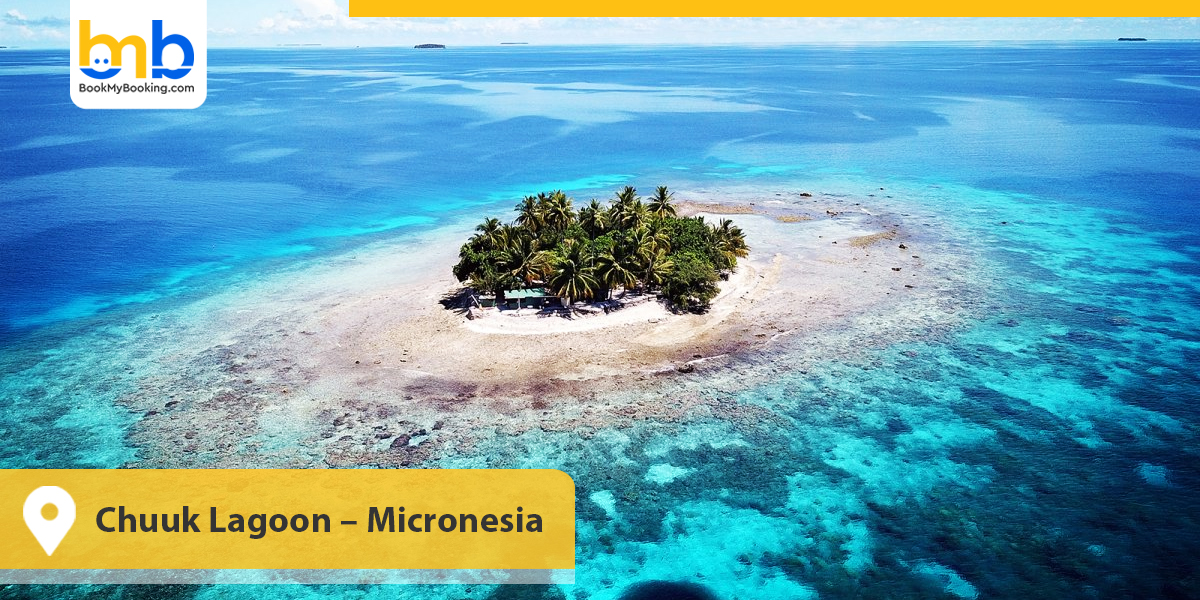
- Best time to dive: December to April
- Dive level: Intermediate to advanced
- Notable site: Shinkoku Maru
Chuuk Lagoon (formerly Truk Lagoon) is unmatched if you're looking for sheer volume and variety. This lagoon is home to over 60 WWII wrecks, many of which are perfectly preserved beneath layers of coral and sea life. It's a standout among historic underwater shipwrecks, offering a powerful dive experience that blends tragedy, beauty, and exploration. Expect to see Japanese warships, planes, and supply vessels now inhabited by turtles, reef sharks, and moray eels. Many of the sites are deep and require solid buoyancy, making this a true adventure for experienced divers interested in advanced wreck diving destinations with real historical depth.
USS Oriskany – Florida, USA
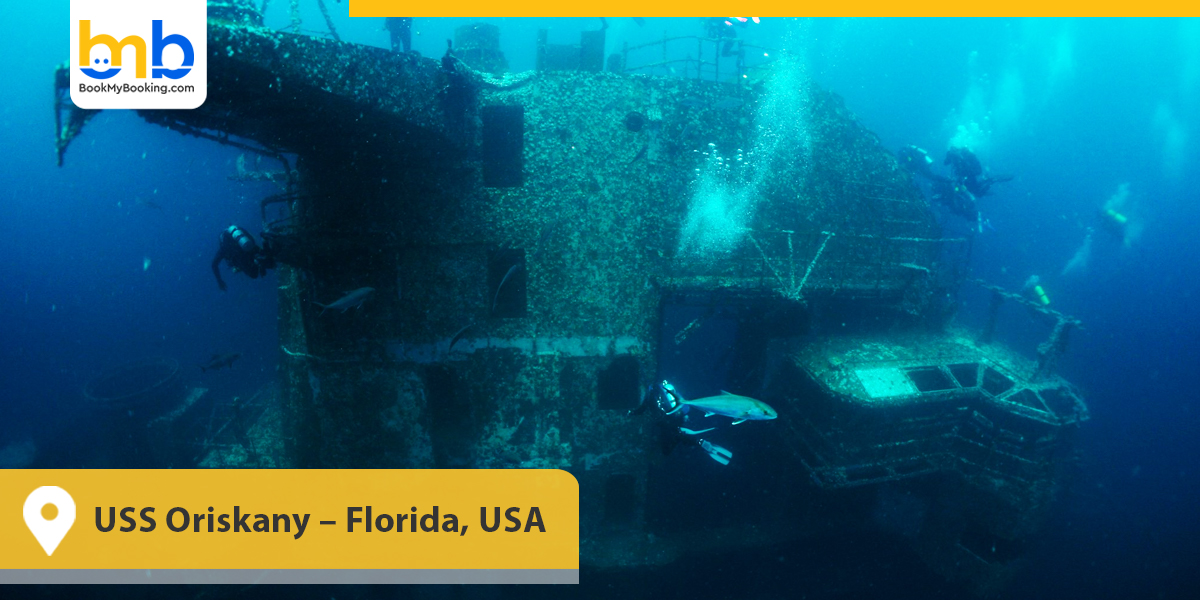
- Best time to dive: May to September
- Dive level: Advanced
- Notable site: "The Mighty O"
The USS Oriskany is one of the world's largest intentionally sunk artificial reefs, resting off the coast of Pensacola, Florida. Originally an aircraft carrier, it now lies in deep blue water, attracting large pelagics and encrusting corals alike. Nicknamed "The Mighty O," it's a favourite for tech divers and those seeking large-scale bucket list scuba diving adventures. Massive swim-throughs, hangar bays, and flight decks offer endless exploration opportunities. The site is also a testament to marine restoration efforts, transforming military metal into a sanctuary of life. Without a doubt, it's one of the best shipwrecks to dive in North America
Read More - Dubai Holiday packages from the US
Yongala Wreck – Queensland, Australia
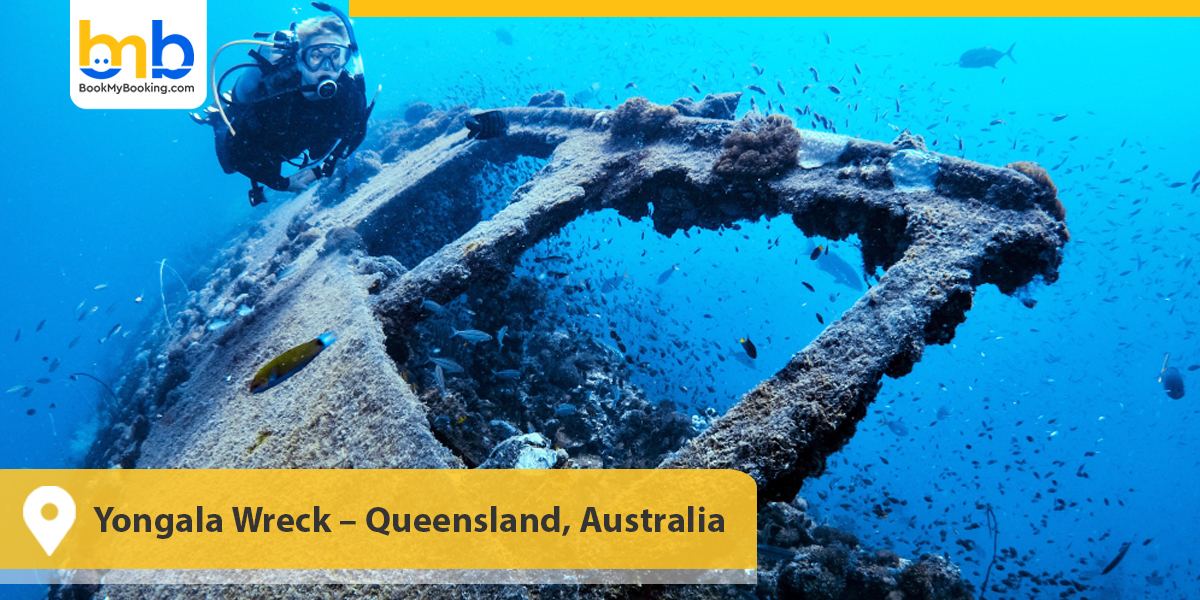
- Best time to dive: March to December
- Dive level: Advanced
- Notable site: Outer Great Barrier Reef
Sunk during a cyclone in 1911, the SS Yongala is now one of Australia's most vibrant wreck dives. Located off the coast of Townsville, it's known for attracting large marine life, including rays, barracuda, groupers, and even sea snakes, which frequent the site. While technically a wreck, it feels more like an artificial reef, its structure draped in soft corals and teeming with life. It's a great example of how nature reclaims tragedy. The ship rests in open water, so expect strong currents and advanced conditions, making it one of the more exhilarating shipwreck scuba diving locations for seasoned divers.
Scapa Flow – Orkney Islands, Scotland
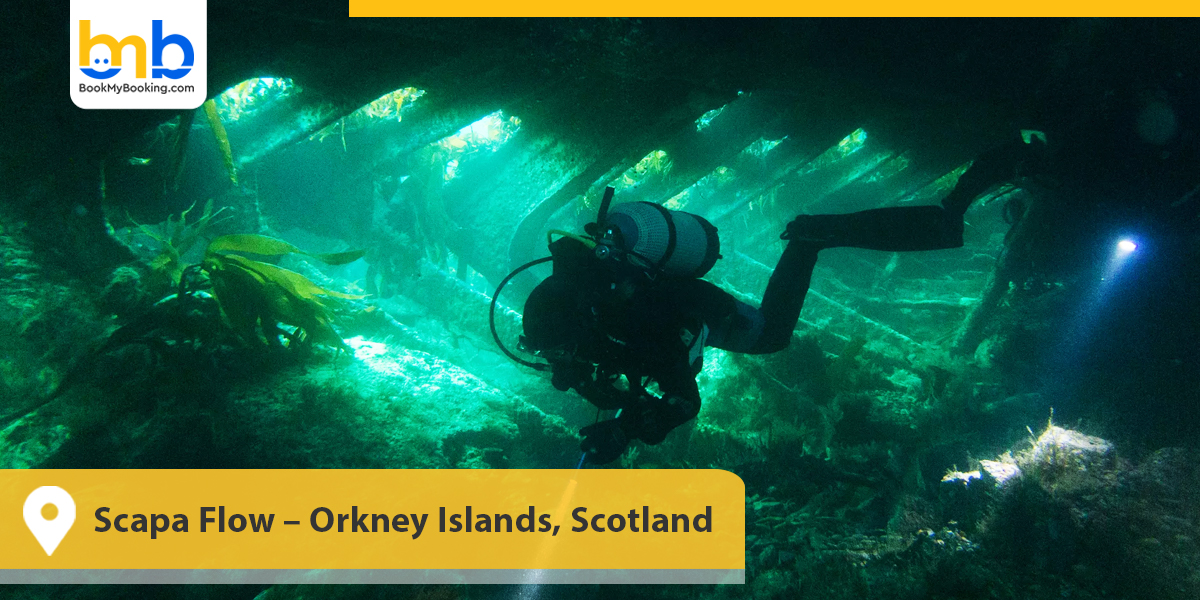
- Best time to dive: May to October
- Dive level: Advanced (dry suit recommended)
- Notable site: SMS Markgraf
Scapa Flow is cold, clear, and hauntingly beautiful, unlike any tropical wreck dive. This remote bay in Scotland is the resting place of the German High Seas Fleet, scuttled in 1919 after World War I. The enormous wrecks lie in relatively shallow water, ideal for extended bottom times and detailed exploration. Covered in anemones and touched by kelp forests, the area has an eerie stillness that only enhances the experience. It's a must for divers interested in ghost ships for scuba divers, with a perfect balance of history, atmosphere, and cold-water challenge.
Read More - Most colorful places in the world
Coral Reefs That Will Leave You Speechless
There's something timeless and otherworldly about coral reefs. They burst with colour, motion, and life as vibrant ecosystems and natural sculptures. Diving into a reef is like stepping into a living kaleidoscope — fish dart between coral towers, sea turtles glide past fans, and sunlight dances off every surface. These dive sites aren't just visually appealing; they're ecological powerhouses, some under threat, while others are fiercely protected.
Great Barrier Reef – Australia
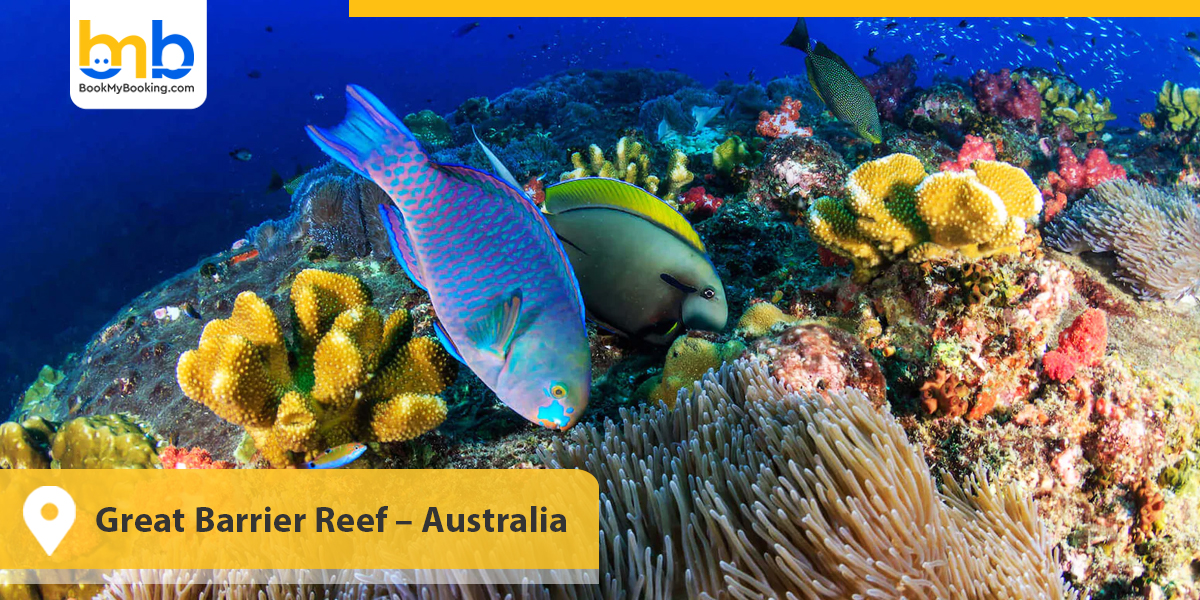
- Best time to dive: June to November
- Dive level: All levels
- Notable site: Osprey Reef
Spanning over 2,300 kilometres, the Great Barrier Reef is the most extensive reef system on Earth and one of the best coral reef dives for sheer scale and diversity. It offers everything, from colourful coral bommies to deep outer reef walls. Here, divers can glide alongside sea turtles, reef sharks, and vast schools of parrotfish. Soft and hard corals blanket the seafloor in a dazzling array of shapes and shades. Despite facing environmental threats, certain regions remain pristine and full of life. If you're seeking colourful coral reef destinations that are both iconic and immersive, this reef is unmatched.
Tubbataha Reefs – Philippines
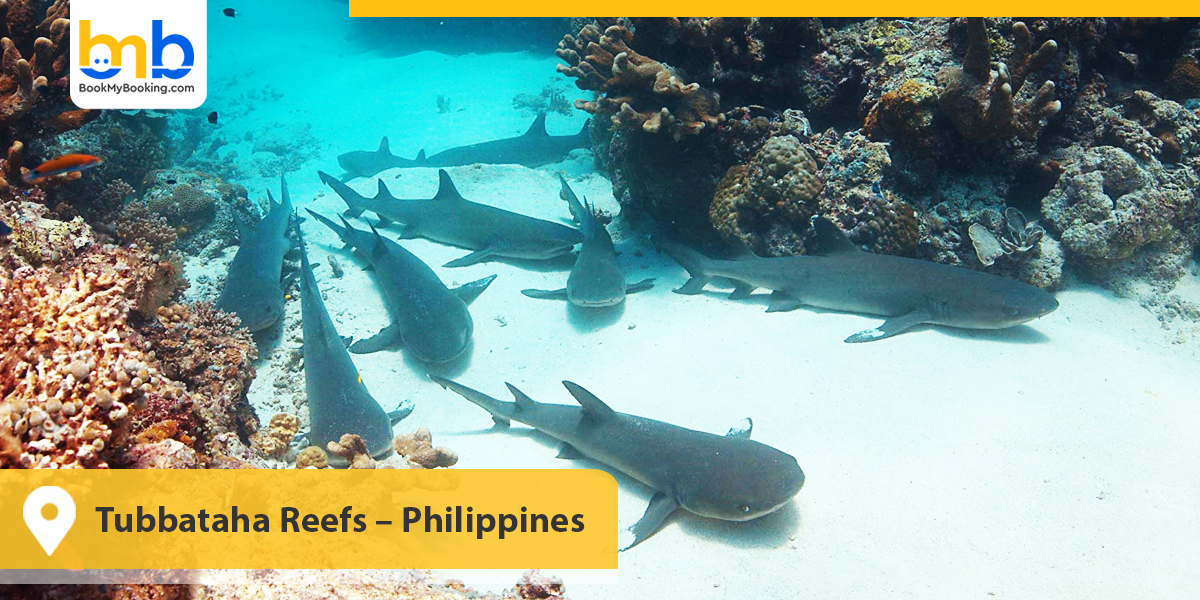
- Best time to dive: March to June (liveaboard only)
- Dive level: Intermediate to advanced
- Notable site: Delsan Wreck
Located in the Sulu Sea, Tubbataha is a UNESCO World Heritage Site and one of Southeast Asia's most well-protected reef systems. Accessible only by liveaboard, it's famed for its near-perfect reefs and pelagic life. Expect intense currents, incredible visibility, and vibrant marine life scenes that change with every dive. Reef sharks, tuna, barracuda, and even whale sharks are frequent visitors. More importantly, the reef's health and biodiversity make it a key site for endangered coral reefs, attracting divers who hope to support sustainable exploration. It also sits squarely within the coral triangle dive sites, offering world-class biodiversity in remote luxury.
Belize Barrier Reef – Belize
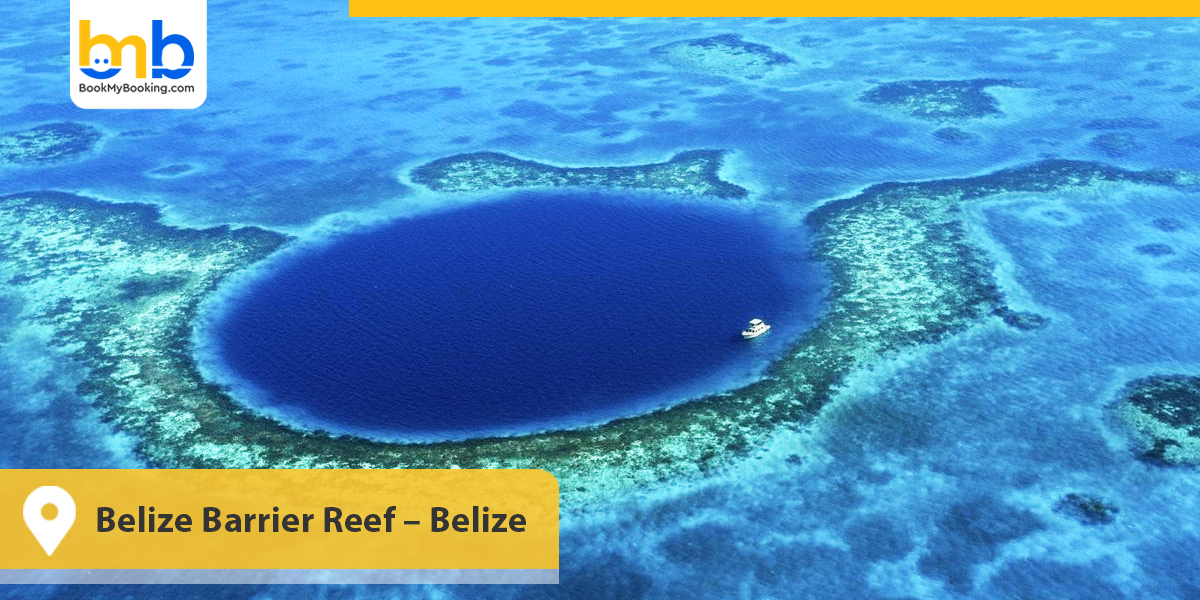
- Best time to dive: April to June
- Dive level: All levels
- Notable site: Great Blue Hole
The Belize Barrier Reef is the second-largest reef system in the world and one of the most captivating places to dive in the Western Hemisphere. The famous Blue Hole may be the poster child, but the surrounding reef truly shines, bursting with vivid coral heads, swaying sea fans, and a diverse array of marine life, including eagle rays and nurse sharks. For those who love drift dives and mellow underwater photography sessions, Belize offers stunning, pristine coral reef diving conditions. It's not just scenic; it's alive with energy. Conservation efforts in the area keep it vibrant, ranking it among the healthiest coral reef ecosystems in the Americas.
Fakarava Atoll – French Polynesia
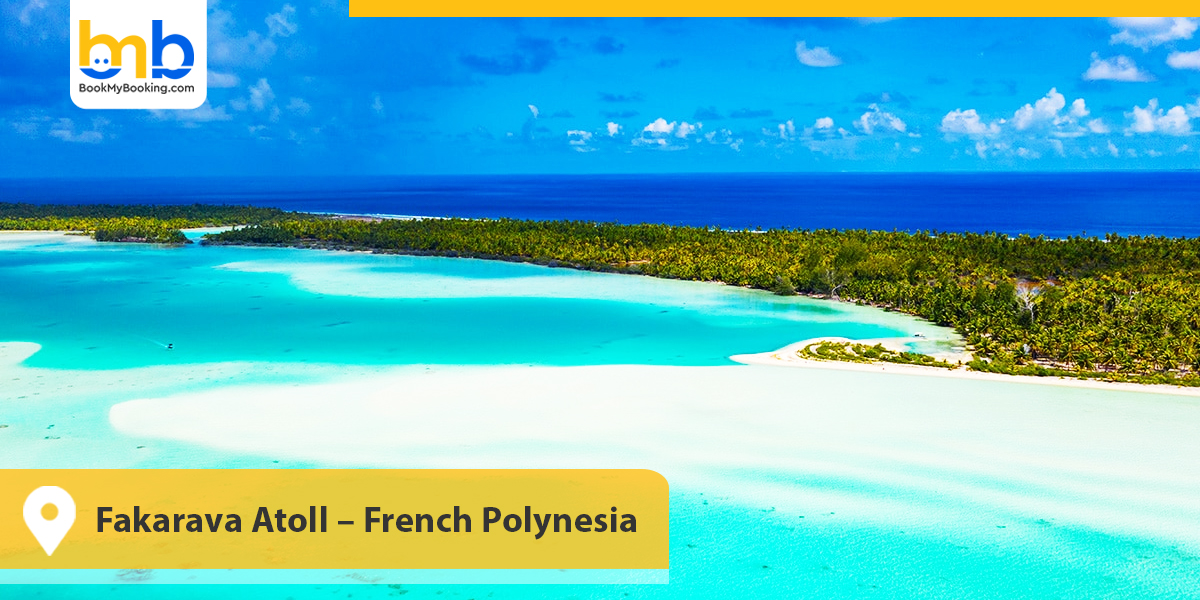
- Best time to dive: May to October
- Dive level: Intermediate
- Notable site: South Pass
Fakarava is the crown jewel of the Tuamotu Archipelago. A UNESCO biosphere reserve is a dream for those who want beauty and biodiversity with a touch of remoteness. Divers are often greeted by clouds of reef fish, walls covered in soft coral, and thrilling encounters with grey reef sharks. The atoll is part of a protected area, making it a textbook example of diving in a marine protected area that still feels untouched. Gentle drift dives through the famous South Pass and provide a sensory overload of motion and colour. This isn't just a beautiful dive — it's a spiritual one, earning its place among the famous dive sites worldwide.
Bucket List Scuba Diving Adventures
Some dive sites offer corals, some wrecks, and others rare marine species—but a few special places bring all three together. These all-in-one destinations are ideal for divers seeking variety in every dive. Whether it's your first big dive trip or the next big check off your list, these bucket list scuba diving adventures promise to thrill, colour, and story.
Andaman Islands – India
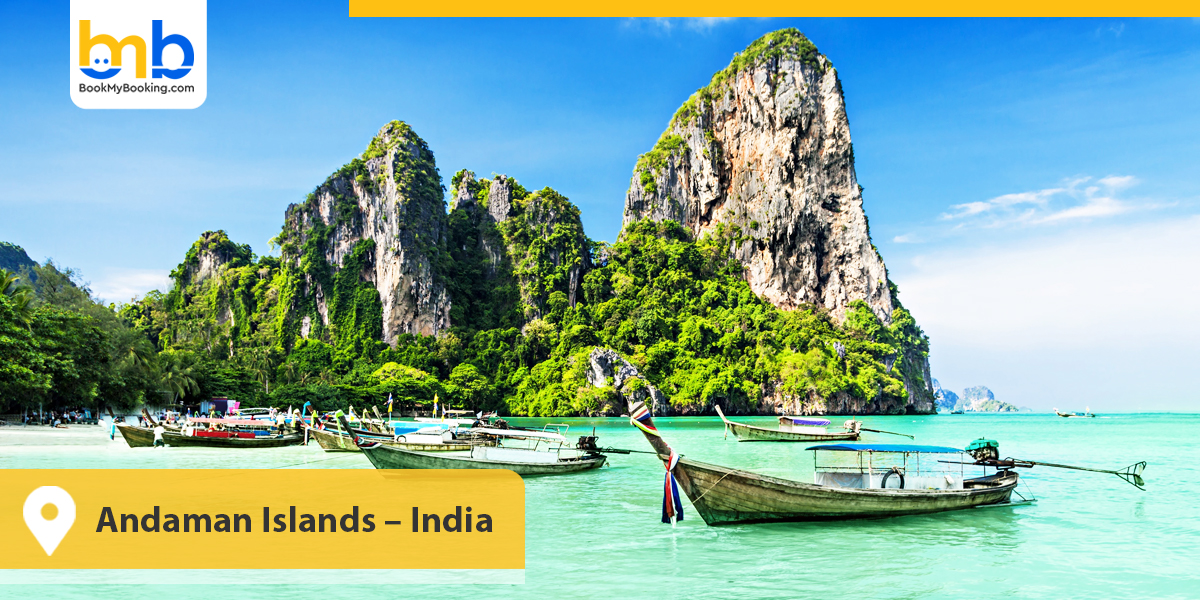
- Best time to dive: December to May
- Dive level: All levels
- Notable sites: Dixon's Pinnacle, MV Mars
The Andaman Islands are India's hidden treasure for scuba lovers. These remote islands in the Bay of Bengal offer crystal-clear waters, dramatic coral drop-offs, and a mix of vibrant marine life. Here, you'll find pristine coral reef diving with species like Napoleon wrasse, turtles, reef sharks and sunken ship dive adventures like the MV Mars wreck near Havelock. If you're lucky, you may even encounter manta rays or dugongs, making it one of Asia's most underrated biodiversity hotspots for divers. India might not be the first country to come to mind when planning a dive trip, but the Andamans might change that.
Palau – Micronesia
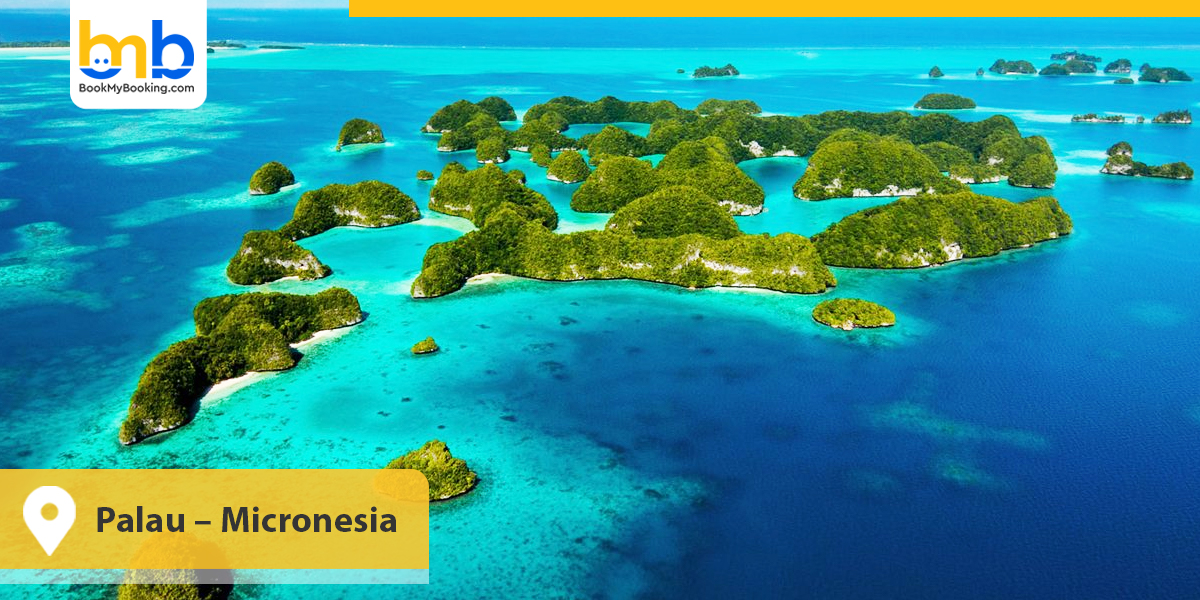
- Best time to dive: November to April
- Dive level: Intermediate to advanced
- Notable site: Blue Corner, Helmet Wreck
Palau is the complete package. It offers spectacular coral walls, WWII wrecks, and marine megafauna like reef sharks and manta rays. Known globally for scuba diving with rare sea creatures, it's also a prime example of diving in protected areas, thanks to its status as a national marine sanctuary. You'll explore Blue Holes, caves, wrecks, and coral gardens, all in one trip. Palau makes every dive feel like a dream, whether you're drift diving along the reef or photographing jellyfish in a non-stinging lake.
Cozumel – Mexico
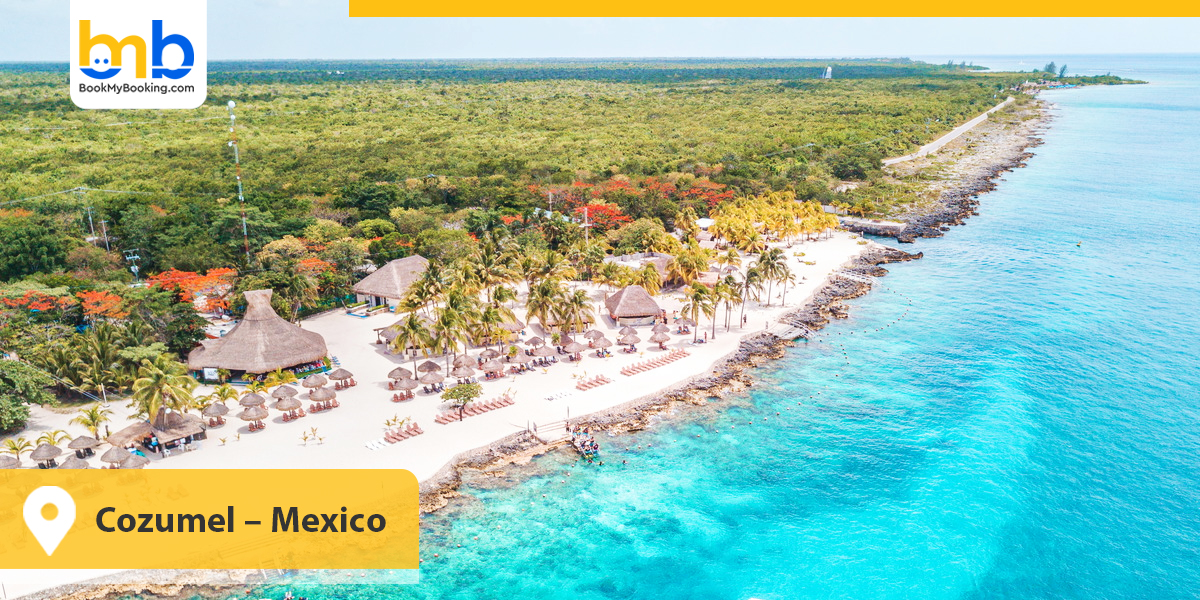
- Best time to dive: November to April
- Dive level: All levels
- Notable site: Palancar Reef, C-53 Wreck
Cozumel is renowned for its swift drift dives, vibrant coral reefs, and Caribbean charm. Along the Mesoamerican Barrier Reef, you'll find some of the best coral formations for diving, with spectacular visibility and soft coral arches teeming with marine life. Moreover, the C-53 Felipe Xicoténcatl wreck adds a historical twist, making it ideal for those who love variety. It's perfect for underwater photographers chasing colour and light, especially in one of the most accessible Instagrammable travel spots in 2025 for divers.
Hawaii – USA
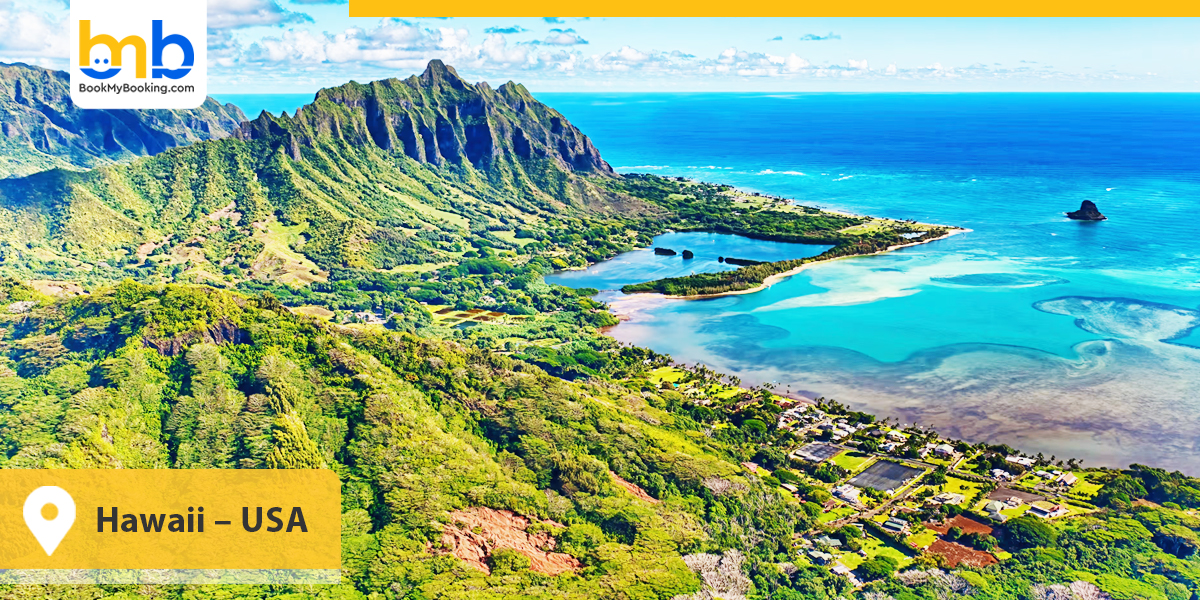
- Best time to dive: May to September
- Dive level: All levels
- Notable sites: Molokini Crater, Sea Tiger Wreck
Hawaii offers volcanic drama both above and below the water. From lava tubes and black-sand dive sites to wrecks like the Sea Tiger and World War II bombers, it provides a diverse diving experience. Coral reefs here are home to endemic species like the Hawaiian green sea turtle, and manta ray night dives off Kona are world-famous. It's one of the few places that combines endangered marine species dive sites, historic underwater shipwrecks, and reef dives within a single trip. Hawaii stands out among the top scuba diving destinations for those craving thrill and tranquillity.
Conclusion: Make Your Next Trip Leave Bubbles
The world beneath the waves is vast, mysterious, and beautiful, if you know where to look. Whether you're gliding past ancient shipwrecks in Chuuk Lagoon, drifting through vibrant coral gardens in Raja Ampat, or photographing rare critters in Lembeh Strait, each dive site offers a chance to witness a part of the planet many never see. These aren't just famous dive sites worldwide; they're windows into fragile ecosystems and living timelines of history.
But with such wonder comes responsibility. The oceans are under pressure, and as divers, we play a role in protecting them. Each air tank you strap on is not just about adventure; it's a commitment to explore mindfully, support conservation, and inspire others to do the same.


